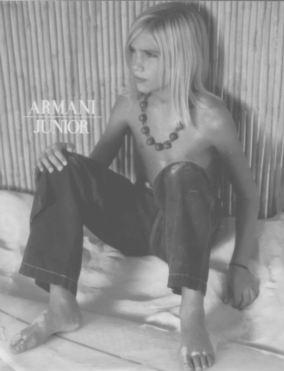Debate Guide: Reverse sexualization

Very often, the panic aroused upon the discovery, making or release of naked or provocative child photography renders non-explicitly-sexual matter erotic in retrospect. Alternatively, by classifying any naked picture of a child as "pornography", "dangerous" and worthy of censorship, we admit that children's bodies arouse erotic interest in society. This is particularly pertinent to the mindset of "sexualisers" - those who are complicit in this sexualising censorship. It is indeed bizarre that under our current stigma, the only "appropriate" thought to be expressed on seeing the naked body of a child depicted for its own sake is one of a sexual nature. It seems to contradict contemporary society's supposed moral propriety, something only possible in the face of undeniable evidence (children can be erotic). This intuitive knowledge of children's aesthetic, erotic appeal shows to some extent how human sexuality is a heterogeneous mesh of conflicting and complimenting desires, including attraction to children.
One example of reverse sexualisation comes from a Junior Armani poster, which was criticised for sexualising children. It is clear that the 74 moralistic, totally 'non - pedophilic'(!) UK complainants had somehow "deciphered" just how the boy himself oozed sexuality, and how his - one would imagine, innocent - pose implied a precocious and sexual nature. The role of conditioning - even guilt in this process is easy to see. For what other reason would a human being instinctively perceive something as so "sickening" yet "sexual" at the same time? If there really is something universally and timelessly "dangerous" about the sexually attractive child, we have yet to see the expected instinctual response, instead relying on the social construct of contemporary morality to save the children.
Denial
A recent example of denial - a possible attempt to crack down on "sexualising" the most sexually explicit material can be seen in the language of the british IWF, where all mentions of "pornography" must be replaced by "images of child abuse".